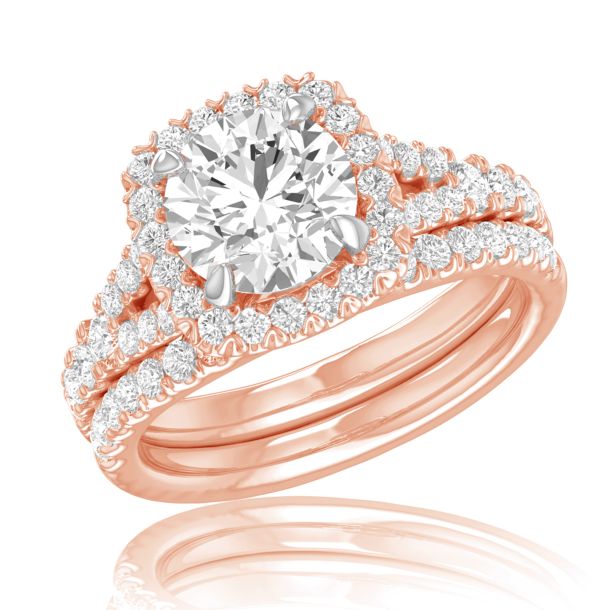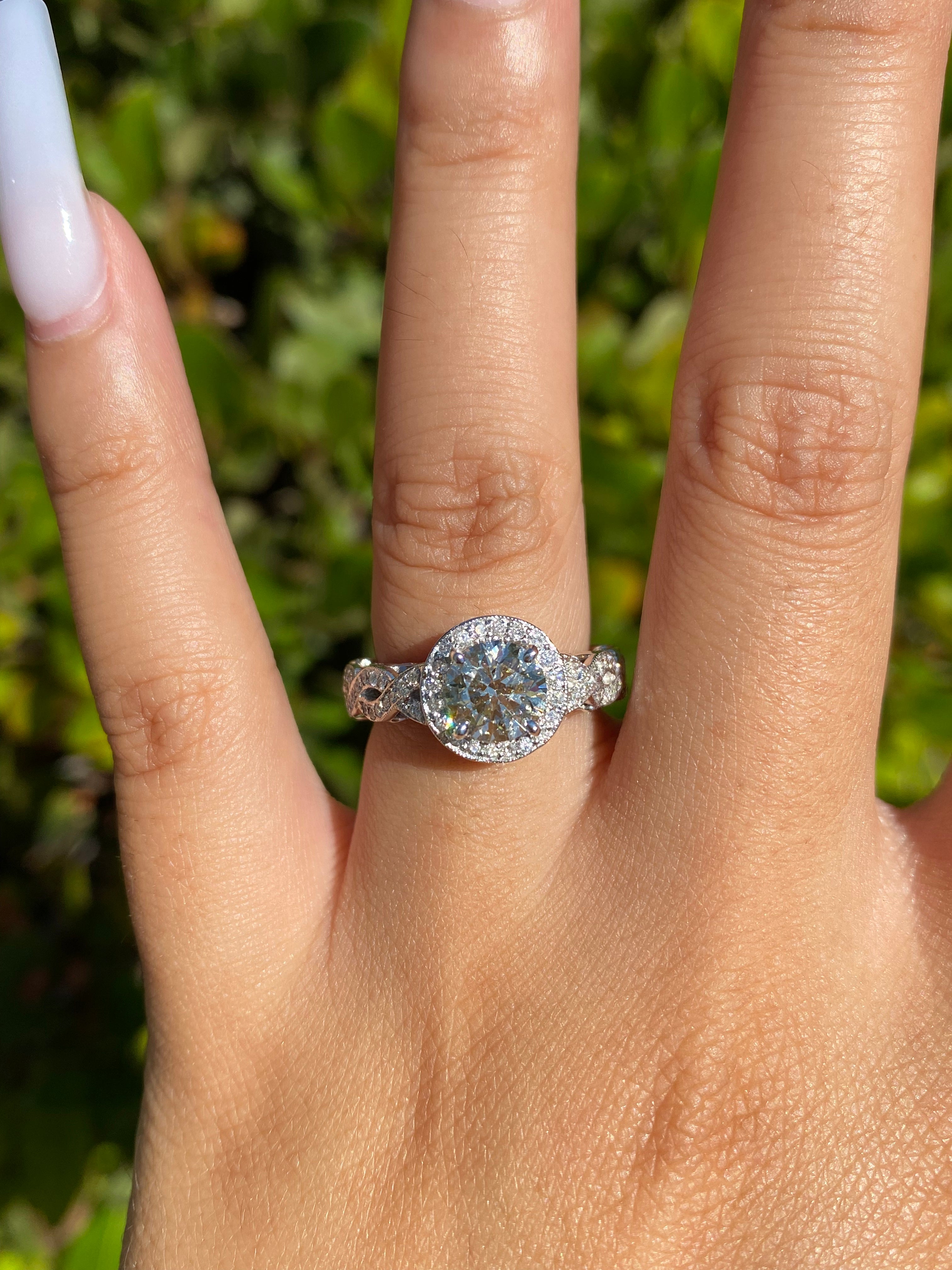Why Lab Grown Diamond Involvement Rings Are the Perfect Option for Eco-Conscious Couples
Lab-grown Diamond involvement rings offer an engaging option for pairs who focus on sustainability. These rubies provide a striking option to typical mined stones, considerably reducing environmental damage. They are developed making use of advanced techniques that guarantee both quality and radiance. As awareness of ethical sourcing grows, numerous couples are reconsidering their choices. What effects does this change have for the future of the Diamond industry?

The Ecological Effect of Conventional Diamond Mining
Although Diamond mining has actually long been celebrated for its allure and eminence, the ecological repercussions of standard mining methods are increasingly worrying. The removal of diamonds commonly includes comprehensive land disruption, causing deforestation and environment loss for numerous varieties. Furthermore, the process takes in vast amounts of water, which can diminish regional sources and negatively impact bordering communities. Poisonous chemicals used in mining procedures can pollute nearby water sources, even more endangering both human populaces and wild animals.
Additionally, the carbon impact associated with moving mined rubies includes in the overall ecological toll. The heavy machinery and devices needed for mining operations contribute substantially to greenhouse gas discharges. As recognition of these issues grows, lots of customers are beginning to question the sustainability of conventional Diamond sourcing. This change in viewpoint highlights the immediate requirement for more eco-friendly alternatives, such as lab-grown diamonds, which assure to minimize the environmental effect while maintaining the charm and worth of Diamond fashion jewelry.
The Refine of Developing Lab-Grown Diamonds
Lab-grown rubies are created with two key approaches: High Stress High Temperature Level (HPHT) and Chemical Vapor Deposition (CVD) The HPHT procedure resembles the all-natural problems under which diamonds form in the Earth's mantle. It includes subjecting carbon to extreme stress and temperature level, causing the formation of carbon atoms right into Diamond structures. On the other hand, the CVD method permits for the development of diamonds in a controlled environment. This strategy makes use of a gas mixture containing carbon, which is energized to create plasma, making it possible for carbon atoms to down payment onto a substratum and grow layer by layer into Diamond crystals.
Both approaches generate diamonds that are chemically and literally the same to natural diamonds - lab grown diamond engagement rings. The selection of approach commonly relies on the wanted qualities and size of the last gem. This ingenious method to Diamond production not just uses a sustainable choice yet likewise permits higher transparency in the sourcing of materials
Quality and Luster of Lab-Grown Diamonds
While numerous might presume that lab-grown rubies differ in quality from their all-natural equivalents, they in fact exhibit equivalent sparkle and aesthetic allure. Lab-grown diamonds are developed using innovative technology that reproduces the natural problems under which diamonds form, causing rocks that have similar physical and chemical residential or commercial properties. These diamonds attain the exact same outstanding clarity and shade grading as mined rubies, making them equivalent to the naked eye.
In terms of luster, lab-grown rubies usually show premium light performance as a result of their precision-cut elements. The strenuous quality control throughout production guarantees that these diamonds fulfill high standards, enhancing their visual attraction. In addition, they are available in a variety of sizes and shapes, enabling couples to discover the ideal ring to match their personal style. Ultimately, lab-grown diamonds offer an elegant combination of charm and quality, making them an attractive option for interaction rings.
Moral Considerations in the Diamond Sector
As consumers end up being progressively familiar with the honest implications bordering Diamond sourcing, the conversation around the Diamond industry has moved substantially. Concerns about conflict rubies, often referred to as "blood diamonds," have actually prompted ask for better transparency and liability in mining techniques. These rubies are extracted in war zones and sold to finance armed conflict, raising significant ethical inquiries for customers. Furthermore, the ecological influence of typical Diamond mining has come under scrutiny, with issues such navigate to these guys as environment damage and water pollution frequently highlighted.
In feedback, lots of have turned to lab-grown diamonds as a much more ethical alternative. These rocks are produced in regulated settings, getting rid of the risks connected with mining. As a result, lab-grown rubies appeal to consumers seeking to make liable choices that straighten with their values. The expanding demand for ethical practices remains to reshape the Diamond market, promoting gentle and sustainable sourcing techniques.
Cost-Effectiveness of Lab-Grown Diamonds
Lab-grown diamonds use a compelling option for consumers seeking visit our website cost-effective involvement rings - lab grown diamond engagement rings. Valued considerably less than their all-natural counterparts, they give exceptional worth for money without giving up quality or appearance. This affordability makes lab-grown rubies an attractive choice for budget-conscious pairs
Lower Price Factor
Numerous pairs are uncovering that choosing lab-grown Diamond interaction rings can considerably lower their general prices without compromising top quality or elegance. These diamonds commonly set you back 30% to 50% much less than their extracted equivalents, making them an attractive choice for budget-conscious customers. The cost benefit occurs from lower production expenses and a much more effective supply chain, which eliminates the expenses connected with mining. Therefore, pairs can spend in larger rocks or even more detailed setups, improving the total visual of their rings. This price not only enables for a more individualized choice but also aligns with the values of eco-conscious pairs that focus on sustainability while staying financially savvy. Lab-grown diamonds provide an excellent blend of sophistication and economic situation.
Value for Money
The cost-effectiveness of lab-grown diamonds prolongs beyond their preliminary price, supplying extraordinary value for cash. Unlike all-natural diamonds, lab-grown alternatives can be up to 40% more economical while maintaining the very same physical and chemical residential or commercial properties. This cost allows pairs to buy bigger or higher-quality stones without exceeding their budgets. Furthermore, the resale value of lab-grown rubies is progressively boosting, making them an extra feasible option for future financial site link considerations. Furthermore, lab-grown rubies usually include lower moral and environmental costs, providing pairs with satisfaction. By picking lab-grown diamonds, eco-conscious pairs not only conserve cash however also add to sustainable practices, improving their total worth suggestion in the fashion jewelry market.

Modification Options for Lab-Grown Engagement Rings
Exactly how can couples assure their engagement ring shows their special romance? Modification options for lab-grown Diamond engagement rings supply an ideal option. Couples can pick from different Diamond forms, consisting of round, princess, or oval, permitting them to pick a style that resonates with their personal aesthetic.
Furthermore, they can pick the setup-- be it jewelry, halo, or vintage-inspired-- ensuring the ring complements the Diamond's luster. Steel selections, such as white gold, yellow gold, or climbed gold, even more improve customization, providing to specific tastes.
Furthermore, couples can incorporate significant inscriptions, including an emotional touch that represents their bond. With these comprehensive personalization choices, lab-grown Diamond involvement rings not just symbolize a couple's love yet additionally mirror their values, making them an ideal choice for eco-conscious partnerships. Ultimately, these rings become a real depiction of their special trip together.
Frequently Asked Inquiries
Just How Do Lab-Grown Diamonds Contrast to Natural Diamonds in Value?
Lab-grown rubies generally cost 20-40% much less than natural diamonds, providing similar top quality and look. Their reduced price factor makes them an enticing option, particularly for budget-conscious consumers looking for honest and lasting choices in fashion jewelry.

Are Lab-Grown Diamonds Extra Durable Than All-natural Diamonds?
Lab-grown rubies have the same physical and chemical residential or commercial properties as all-natural rubies, consisting of longevity. Both types rack up an excellent 10 on the Mohs scale, ensuring that lab-grown diamonds are just as resistant to damaging and damage.
Can Lab-Grown Diamonds Be Resold Quickly?
Lab-grown rubies can be resold, however their market demand differs compared to natural rubies. While some purchasers value their honest beginnings, others might favor natural alternatives, possibly impacting resale worth and convenience of transaction.
What Are the Care Instructions for Lab-Grown Diamonds?
Lab-grown rubies call for regular care to keep their luster. Cleaning up with moderate soap and warm water, making use of a soft brush, and staying clear of harsh chemicals will help preserve their sparkle and integrity for several years ahead.
Are There Any Qualifications for Lab-Grown Diamonds?
Lab-grown rubies can be accredited by credible companies such as the Gemological Institute of America (GIA) and the International Gemological Institute (IGI) These qualifications guarantee high quality, adherence, and authenticity to market criteria for lab-created gems.
Both methods produce diamonds that are chemically and physically identical to all-natural diamonds. Lab-grown diamonds are created using advanced modern technology that reproduces the all-natural problems under which diamonds create, resulting in rocks that have similar physical and chemical homes. Lab-grown diamonds typically cost 20-40% less than natural rubies, using similar quality and look. Lab-grown rubies have the exact same physical and chemical residential properties as natural rubies, including toughness. Lab-grown rubies can be re-selled, but their market need varies contrasted to all-natural diamonds.